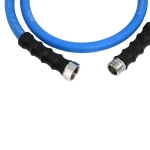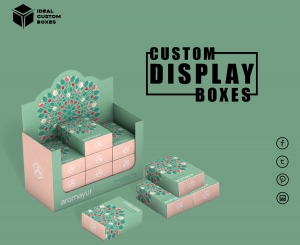When it comes to maintaining a garden or handling various outdoor water needs, selecting the right garden hose is essential. While most people opt for hoses that come with pre-installed fittings, a garden hose without fittings offers a unique set of benefits. If you're looking to customize your setup, reduce costs, or simply want more control over your hose configuration, understanding the advantages of garden hoses without fittings is crucial. In this article, we will explore the reasons why you should consider these hoses, the best ways to use them, and how they can enhance your outdoor water system.
What Is a Garden Hose Without Fittings?
A garden hose without fittings is essentially a hose tube that lacks connectors or attachments at both ends. Typically, these hoses are sold as flexible tubes that you can customize to your needs. For instance, you could add your hose connectors, spray nozzles, or any other attachments based on the type of tasks you need to accomplish in your garden.
Many gardeners prefer these hoses because they give them full control over the accessories that go on the hose. Whether you are connecting it to a watering can, a sprinkler, or a pressure washer, the ability to choose the right fitting for your equipment ensures compatibility and longevity.
Why Choose a Garden Hose Without Fittings?
There are several advantages to opting for a garden hose without fittings:
- Customization: You can select the exact type of fittings and nozzles that suit your watering needs. Whether you're looking for high-pressure spray nozzles or a gentle flow for delicate plants, this option lets you configure the hose setup to match your requirements.
- Cost-Effective: Often, garden hoses with pre-attached fittings come at a premium. By purchasing a hose without fittings, you can save money, particularly if you already have the necessary accessories or plan to purchase them separately.
- Compatibility: A hose without fittings provides a more universal connection. Depending on your existing tools or system, you can use any fitting, which means it's compatible with various devices like sprinklers, pressure washers, or irrigation systems.
- Durability: Fittings, if not of good quality, can wear out over time. If you maintain the fittings separately and only replace them when needed, your hose itself can have a much longer lifespan, as the rubber or material of the hose tube will not degrade due to inferior fittings.
- Flexibility: For those with multiple garden tools, a hose without fittings makes it easier to switch between different applications without being locked into a specific configuration.
Types of Garden Hoses Without Fittings
When choosing a garden hose without fittings, you may come across a variety of materials and types. Understanding these options can help you make a more informed decision:
- Rubber Hoses: Rubber hoses are known for their durability and flexibility. They are able to withstand high water pressures, making them suitable for a variety of tasks. If you need a hose that can handle rough conditions, a rubber hose is an excellent option.
- Polyurethane Hoses: Lighter and more flexible than rubber, polyurethane hoses are perfect for homeowners who need to move their hoses around frequently. They are also resistant to kinks and are great for areas with harsh climates.
- Vinyl Hoses: Vinyl hoses are often more affordable and lightweight compared to rubber and polyurethane. While not as durable, they are still suitable for light-duty use, like watering plants or small garden spaces.
- Expandable Hoses: These hoses expand and contract as water flows through them, making them easy to store and lightweight. Though expandable hoses without fittings can be found, they're generally used for specific types of applications due to their limited durability in extreme conditions.
How to Choose the Right Fittings for Your Hose
After purchasing a garden hose without fittings, the next step is selecting the appropriate fittings. The type of fitting you need depends on the intended use of your hose. Here are some key tips to help you choose the right ones:
- Thread Type: Most garden hose fittings are either male or female, with a standard thread type of 3/4 inch. Before purchasing a fitting, ensure it matches the size of the hose you intend to use.
- Material: Consider the material of the fitting. Brass fittings are a common choice due to their durability and rust resistance, but plastic and aluminium fittings can also be used for lighter tasks.
- Connector Type: Depending on your needs, you may require a variety of connectors, such as quick-connect couplings or traditional screw-on types. Quick-connect couplings are ideal for ease of use, while screw-on types offer a more secure fit.
- Spray Nozzles: If you're planning to use your hose for watering plants, adding a spray nozzle with adjustable spray patterns can make the task easier. From fine mist to jet stream, the spray nozzle you choose will depend on the watering needs of your garden.
Benefits of Customizing Your Hose Setup
One of the greatest benefits of using a garden hose without fittings is the ability to customize your setup. Here are some ways in which customization can benefit you:
- Water Conservation: By using specific spray nozzles or irrigation systems, you can control water flow, preventing waste and ensuring that your garden receives just the right amount of water.
- Ease of Use: Custom fittings allow you to choose the most convenient and comfortable method for using your hose. Whether you need a longer hose or a specialized fitting for a sprinkler, you can modify the hose as necessary to meet your needs.
- Enhanced Performance: If you have a high-pressure washer or other equipment requiring a strong water flow, a customized hose with the right fittings can improve the performance of your tools, leading to better results in less time.
- Increased Longevity: Choosing quality fittings and nozzles means that your hose will last longer, and any damaged components can be easily replaced, rather than having to purchase an entirely new hose.
Common Mistakes to Avoid
While customizing your garden hose setup offers many advantages, it's essential to be mindful of some common mistakes:
- Selecting the Wrong Fittings: Always check the size and compatibility of your fittings with your hose. If you choose a fitting that doesn't fit properly, it can cause leaks or even damage the hose.
- Neglecting Hose Maintenance: Even though a hose without fittings is more customizable, it still requires regular maintenance. Ensure that your hose remains free from kinks, abrasions, and debris to maintain optimal performance.
- Overloading the Hose: Be careful not to exceed the pressure limit of your hose, as using too much pressure can lead to ruptures. Always choose a hose and fittings designed for the type of work you're doing.
Conclusion
A garden hose without fittings is a versatile and cost-effective solution for gardeners and homeowners who value customization, durability, and flexibility. Whether you need a hose for light-duty watering or heavy-duty tasks like pressure washing, a hose without fittings allows you to choose the right accessories to meet your needs. By considering the type of hose material, selecting appropriate fittings, and maintaining your equipment, you can optimize your garden hose setup for long-term use and superior performance.
FAQs
- Why is a garden hose without fittings a better option?
A hose without fittings gives you full control over the type of connectors and accessories you use, allowing for more customization and flexibility. - How do I know what fittings to choose for my hose?
Fittings should match the size and type of your hose, with most standard hoses using 3/4-inch threads. Choose materials like brass or plastic based on your durability needs. - Can I use any nozzle with a garden hose without fittings?
Yes, you can select any nozzle that fits the chosen fitting type. This allows you to pick a nozzle based on your water flow requirements. - Is it difficult to install fittings on a hose?
No, installing fittings is relatively simple and can be done with basic tools, depending on the type of fittings you choose. - What material is best for a hose without fittings?
Rubber and polyurethane hoses are ideal for their durability and flexibility, though vinyl hoses are cheaper and suitable for light-duty tasks. - How long will a garden hose without fittings last?
With proper care and maintenance, a hose without fittings can last many years, especially if high-quality fittings are used, and the hose is stored properly.






